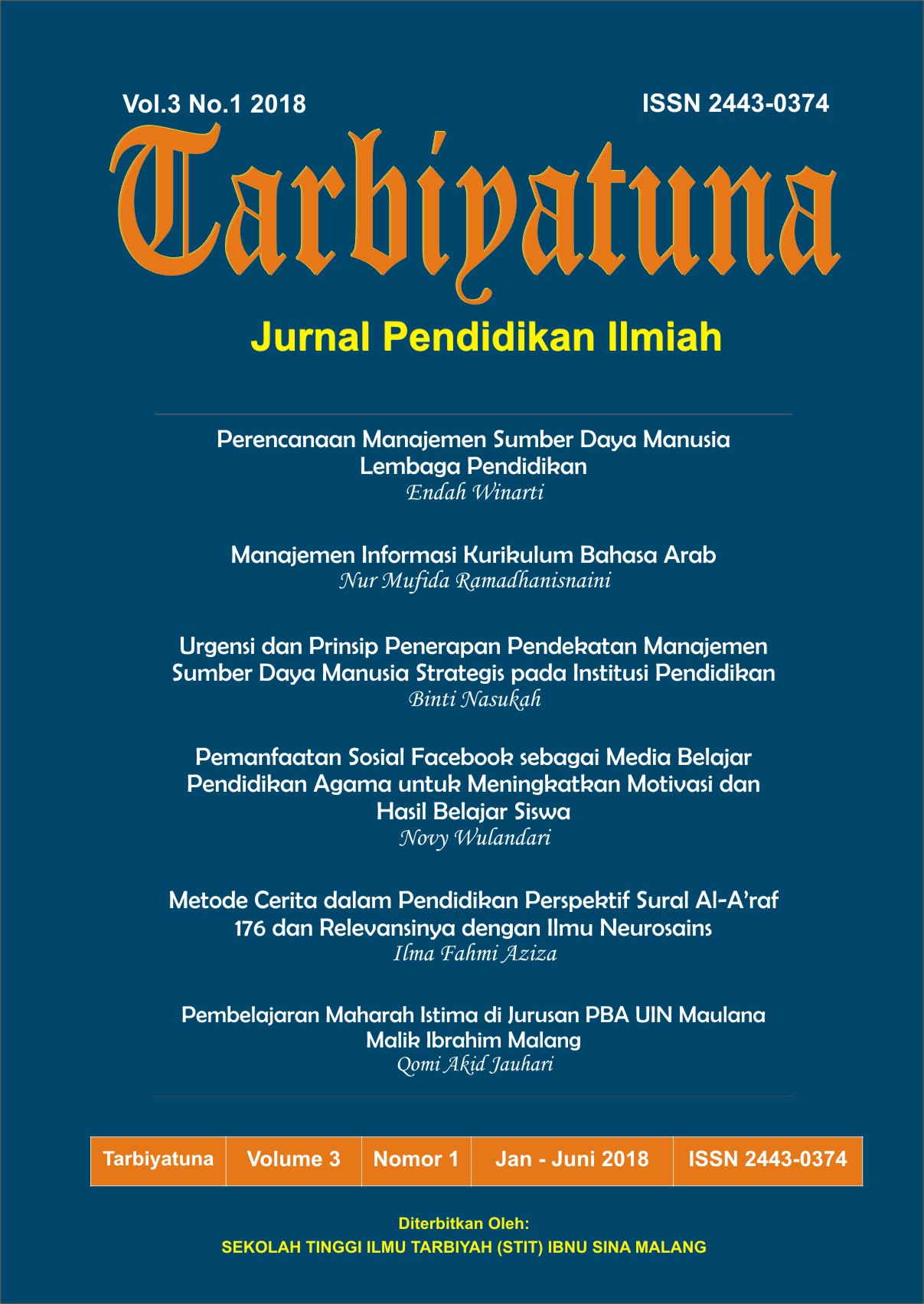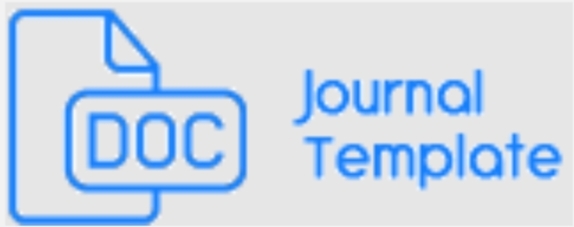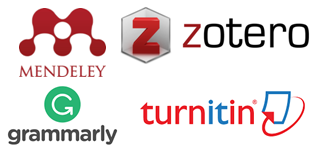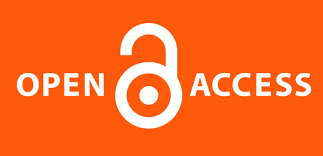Metode Cerita Dalam Pendidikan Perspektif Surat Al A’raf 176 Dan Relevansinya Dengan Ilmu Neurosains
Abstract
Science and Islam is a field of science that has a different perspective, but there is a great relationship of lead when both are integrated. Relevance about science and Islam can also be seen from the story method in the perspective education of al a'raf 176 with neuroscience In the letter of al-A'raf verse 176 shows the importance of the method of story so that people want to think. In terms of neuroscience science also found the fact that the activities of story telling and thinking activities is an important activity because it can stimulate the right brain activity and able to be the key to one's success if done continuously. The use of the word tafakkur in al-A'raf verse 176 also has relevance to neuroscience where tafakkur is the process of thinking about nature and so forth in order to remember the greatness of Allah SWT which uses reason where activates the right brain, and in neuroscience, God Spot or the nerves that drive humans to find gods are also in the right brain.
References
Ibrahim, Haji Lalu M. Thayyib. (2010). Keajaiban Sains Islam. Yogyakarta: Pinus Book Publisher.
Bachri, Bachtiar. (2005). Pengembangan Kegiatan Bercerita, Teknik dan Prosedurnya. Jakarta: Depdikbud.
Tampubolon. (1991). Mengembangkan Minat dan Kebiasaan Membaca pada Anak. Bandung: Angkasa.
Cendikia, Tim Pena. (2009). Panduan Mendongeng untuk TK/TPA/TPQ Sederajat. Gazzamedia : Surakarta. 2013) Dhien,Nurbiana dkk.Materi Pokok Metode Pengembangan Bahasa. Jakarta: Universitas Terbuka.
Majid, Abdul Aziz Abdul, Mendidik Anak Lewat Cerita. Mustaqiim :Jakarta Selatan. 2005.
Baqi, Muhammad Fu’ad Abd al-, tth. al-Mu‘jam al-Mufahrasy li al-Alfaz al-Quran al-Karim. Kairo: Dar al-Hadiś, cet. Ke-2.
Musfiroh, Tadkiroatun. (2005). Bercerita Untuk Anak Usia Dini. Jakarta: Depdiknas,
Moeslichatoen. (2004). Metode Pengajaran. Jakarta: Rineka Cipta.
Crone, John Mc. (2003). Menyingkap Kerja Otak. Jakarta: Erlangga.
Syarifuddin, Amir. (1997). Ushul Fiqh. Jakarta: Logos, cet. Ke-1.
Ruben, Jean Mark. (2009). Langkah Mencerdaskan Otak. Jakarta Timur: Almahira.
Yahya, Muhtar. (1986). Dasar-Dasar Pembinaan Hukum Fiqhi Islam. Bandung: al-Ma’arif.
Munawwir, A. (1997). Warson Kamus al-Munawwir, Arab-Indonesia Terlengkap. Surabaya: Pustaka Progressif.
Qaraá¸awi , Yusuf. (1996). al-’Aql wa al-‘Ilmu fi al-Qur’Än al-KarÄ«m, alih bahasa Abdul Hayyi al-Kattani, dkk, Cet. Ke-1. Kairo:Maktabah Wahbah.
Hanafi, A. (1989). Ushul Fiqhi.Jakarta: Widjaya.








.png)

